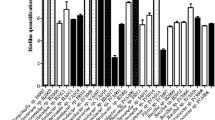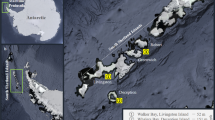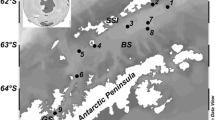Abstract
Although ubiquitous in the marine environment, the presence and importance of thraustochytrid fungoid protists in primary film formation of freshly immersed surfaces in the sea have not been investigated. We isolated thraustochytrids from surfaces of glass, aluminium, mild steel and fibre glass panels immersed in sea water for 1 to 4 d, but not from those of copper and cupro-nickel. Microscopic examination of the primary film on glass surfaces revealed the presence of thraustochytrids. Thraustochytrids grew to varying population densities on surfaces of glass, aluminium and fibre glass in the laboratory. Scanning electron microscopy of the growth of Ulkenia profunda Gaertner, isolated from the primary film, on surfaces of glass and aluminium suggested that cells of the thraustochytrid attached directly to the surfaces, without producing copious extracellular polysaccharides. The presence of ectoplasmic net elements was not a prerequisite for attachment of cells to surfaces. Cell surface hydrophobicity of the thraustochytrid, as estimated by the MATH assay, might play an important role in adhesion. The presence of thraustochytrid cells on a polystyrene surface markedly induced settlement of barnacle larvae (Balanus amphitrite), as compared to barnacle extract and a control.
Similar content being viewed by others
Author information
Authors and Affiliations
Additional information
Received: 26 July 1999 / Accepted: 21 January 2000
Rights and permissions
About this article
Cite this article
Raghukumar, S., Anil, A., Khandeparker, L. et al. Thraustochytrid protists as a component of marine microbial films. Marine Biology 136, 603–609 (2000). https://doi.org/10.1007/s002270050720
Issue Date:
DOI: https://doi.org/10.1007/s002270050720




